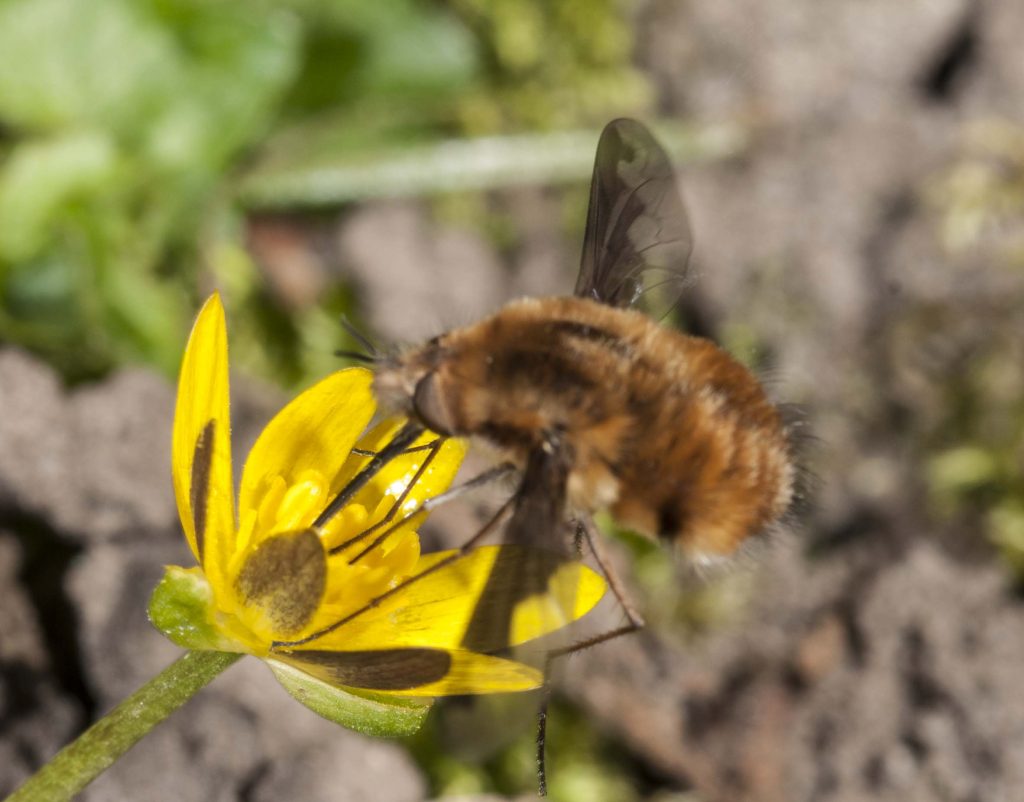The following article by our partner the Farnham Biodiversity Group appeared in the Farnham Herald issue of 11th March 2022.
After the recent storms in February, there are signs of spring in the Farnham area. An annual harbinger of spring is the dark-edged bee fly (Bombylius major). This large furry fly is commonly seen on sunny days in gardens in March, hovering noisily in front of spring flowers using its long proboscis to suck up the nectar. It is an important springtime pollinator of both fruit trees and garden flowers. Some people are scared by them, mistaking their long proboscis as a sting; actually, they are totally harmless to us and should be welcomed in the garden and on the allotment. They are frequent visitors to a great variety of flowers, be they white (apple, blackthorn, plum, viburnum), yellow (colt’s foot, dandelion, primrose, celandine) or blue/purple (bluebells, bugle, green alkanet, and germander speedwell).

On warm sunny days they can be seen pairing. The sexes can be distinguished by their eyes – males have eyes that are close together, whereas females have well separated eyes. The females lay their eggs on the ground, flicking them towards the entrances of the nest burrows of bumblebees or solitary bees. The larvae that hatch crawl in search of the nest’s entrance and if they succeed undergo a metamorphosis and become parasites on the bee larvae. They mature underground and then overwinter in the bees’ nest, hatching in the following spring to restart the lifecycle. The abundance of bee flies is weather dependent – in 2020 when there was a warm spring, they were very common, but in 2021 the early cold snap reduced their numbers.

The common species has wings that are half black, half transparent; another species with speckled wings is spreading towards us, and if you spot one of those it will be very exciting. If you see one of these attractive insects in your garden it is most useful if you record your sighting using an App such as iRecord, giving the place and date, and preferably a photograph. If you get a good photograph, please share it on the ‘Farnham Biodiversity Partnership’ Facebook page.
For more information on this or related subjects contact Farnham Biodiversity Partnership:
contact@FarnhamBAP.org.uk
Photographs:
- A bee fly Bombylius major feeding at a flower of green alkanet. Its wings are beating so fast they are blurred.
- A bee fly Bombylius major feeding at a lesser celandine, showing its long proboscis, furry body and its single pair of wings that are half transparent and half dark.
